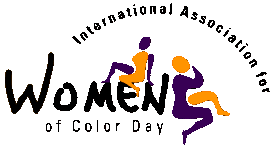The WomenWorldCulture Blog serves as a source of information regarding current events, which are highlighted because of importance to women, cultural communities and/or environmental sustainability. We encourage readers to visit often to read updates and new entries and then to share the information with others.
Title 9, most powerful law against sex discrimination in education and educational institutions, is nearly ended.
With the following steps, Title 9 is nearly gone: Secretary of Education Betsy DeVos is rescinding the advances made to protect women employees and students. The DeVos actions include an interim guide which "differs from the 2011 Dear Colleague letter in several key ways. Perhaps most notably, it rescinds the requirement that schools use a “preponderance of evidence” standard to adjudicate sexual assault cases, and instead allows schools to use a “clear and convincing” evidence standard, which puts a greater burden on accusers. This is a change that critics of the 2011 guidelines have been requesting for some time, and one many advocates say is unfair to survivors.
The interim guide also allows schools to deny survivors the ability to appeal, and lifts the time limit for completing an investigation. Without a time limit, investigations might drag on for years, as they sometimes did before the 2011 guidelines were in place, Peterson said. In some cases, she said, survivors dropped out of school because their investigations went on for so long.
Even before today’s announcement, the education department had sent strong signals that enforcing the 2011 letter wasn’t a priority. The department announced this summer that it would no longer require investigators to collect data on schools’ past behavior as part of civil rights investigations. This indicates to schools that the department will be less thorough in looking into whether they are following the guidelines or not. 'Now it’s going to be much harder to understand how the schools have behaved over time,' Peterson said.
Though the slavery carried out in the US enslaved African American women and men predominantly for centuries, there were also additional groups enslaved, including men and women of indigenous and immigrant populations in North America, the Caribbean, and the Pacific. In addition, there was and continues to be enslavement of women of European heritage. Perhaps more than any other group, denial of the slavery experience by many members of this group is hardest to understand. Historically, the enslavement of whites or Europeans, where is has existed and continues to exist, is primarily the enslavement of white women in sex trafficking.
The United Nations has identified it as one of the fastest-growing and most profitable illegal industry in the world, second only to drug trafficking. The UNs’ latest estimate is that at any one time some 2.5 million people are being trafficked. Human trafficking networks are currently earning annual profits of around US$32billion.
The UN crime-fighting office estimates that 80% of those trafficked are being exploited as sex slaves, the rest are trafficked for slave labour, including in homes and sweatshops. Two out of every three victims are women. Sex trafficking involves some form of forced or coerced sexual exploitation that is not limited to prostitution, and has become a significant and growing problem in both the United States and the larger global community. Human trafficking is a modern-day form of slavery that involves the illegal trade of human beings for the purpose of some form of forced exploitation. The United Nations Office On Drugs and Crime (UNODC) defines human trafficking as any form of recruiting, transporting, transferring, harboring, or receiving a person by means of threat or use of force or other forms of coercion, abduction, fraud, or deception.1 There are approximately 800,000 people trafficked across international borders annually and, of these, 80% are women or girls and 50% are minors.2 Although the degree of trafficking among countries and continents is variable, it is clear that global trafficking has become a growing problem.
Sex trafficking is an umbrella term that may include commercial sex work such as prostitution, but also pornography, exotic dancing, stripping, live sex shows, mail-order brides, military prostitution, and sexual tourism. Although victims of sex trafficking can be of any age and of either sex, the majority are women and adolescent girls. Although many nations have outlawed the trafficking of females, it is still widely prevalent on a global scale. The global sex trade is the fastest growing form of commerce, worth $32 billion annually. In fact, human trafficking is the fastest growing area of organized crime and the third largest income revenue for organized crime after narcotics and arms sales. What makes this business unique is that women and girls sold into sex trafficking earn profits for their pimps and traffickers over a great number of years, unlike the profits earned from drugs and narcotics that are sold and used only once.
Trafficking in the United States
The US Department of State estimates that anywhere from 14,500 to 17,500 people are trafficked in the United States annually. Victims tend to be recruited mostly from Mexico and East Asia, followed by the former Soviet Union, Africa, Eastern Europe, and, finally, Latin America.3 Typically, the countries from which many of the victims originate have unstable political climates and are economically disadvantaged. This facilitates trafficking, as it is easier to recruit and transport women, bribe officials, and forge passports and other travel documents.2 The United States is one of the top destinations for sex trafficking, and many children from the United States are trafficked to other industrialized nations, including the Netherlands, Germany, and Japan.2
Is there a Connection between Discrimination Against Women and Girls in Educational Institutions and Sex Trafficking and Other Crimes against Women and Girls? YES! WOMEN’S SOCIAL, ECONOMIC INEQUALITY LEADS TO TRAFFICKING, DOMESTIC VIOLENCE, Note Women Represent ‘Staggering’ 70 Per Cent of Those in Poverty; Despite the 1972 enactment of Title IX, public and private schools continue to discriminate against female athletes. Even though both state and federal laws have prohibited sex discrimination in sports programs for over forty years in publicly funded educational institutions and recreational facilities, girls are still losing out on the playing field. The fight to end discrimination against pregnant and parenting students, and school employees has not ended. Despite legal protections against sex discrimination in education, pregnant and parenting students are routinely stigmatized, marginalized, and coerced into attending substandard, non-traditional schools.
Title IX, a groundbreaking statute intended to end sex discrimination in education, became the law of the land on June 23, 1972. While most famous for its requirement that schools provide girls with equal athletic opportunities, the law applies to all educational programs that receive federal funding, and to all aspects of a school's educational system. Title IX benefits both boys and girls and is the lynchpin of 40 years of efforts to promote and establish gender equity in schools.
The ACLU Women's Rights Project advocates for educational equality under Title IX in four key areas: sex-segregation and sex stereotypes in education, pregnant and parenting teens' rights, gender-based violence, and athletics. Established in 1972, the same year Title IX went into effect, the Women's Rights Project was has been fighting for women's equality and empowerment ever since.
NOTE: The information presented here is not original research but is drawn from a variety of civil rights enforcement agencies, United Nations and US Government studies and the work of many community human/civil rights organization. It is provided here to stimulate investigation of the topic by readers and to encourage discussions which lead to the resolution of problems by those most impacted. Readers should reach their own conclusions based on their own research.
Aurora©2003*
Africa, Up and Down America, Asia, Antarctica, Australia; Indian, Pacific,
the Atlantic All that land and ocean,
We only have one world.
We are all the colors of the rainbow; if not united, just a bunch of lines
When we come together, we let our light shine.
We are the Aurora, Aurora of our time. *
by Suzanne Brooks & Reggie Graham
The theme and theme song of WomenWorldCulture--Aurora-- highlight the movement from division based on a negative emphasis on difference to unity founded in our common humanity defined by DNA and diversity refined by cultures and environments. The Aurora Blog of WomenWorldCulture will encourage constructive and civil exchanges of ideas; stimulate ideas and suggestions for unique and positive programs and services; and provide recommendations and support for education, research and documentation addressing social issues and problems, reciprocal communication and inspiration, sharing and leadership through the arts. The success of this blog will be rooted in mutual caring for each other, with the willingness to learn from each other. Honor and dignity will be the rule. The blog is published with the same media rules, requirements and guidelines required for advertisers on this site. Readers can refer to that section for additional information.
Welcome to Aurora: The WomenWorldCulture Blog.
Aurora Blog
The WomenWorldCulture Blog serves as a source of information regarding current events, which are highlighted because of importance to women, cultural communities and/or environmental sustainability. We encourage readers to visit often to read updates and new entries and then to share the information with others.
Title 9, most powerful law against sex discrimination in education and educational institutions, is nearly ended.
With the following steps, Title 9 is nearly gone: Secretary of Education Betsy DeVos is rescinding the advances made to protect women employees and students. The DeVos actions include an interim guide which "differs from the 2011 Dear Colleague letter in several key ways. Perhaps most notably, it rescinds the requirement that schools use a “preponderance of evidence” standard to adjudicate sexual assault cases, and instead allows schools to use a “clear and convincing” evidence standard, which puts a greater burden on accusers. This is a change that critics of the 2011 guidelines have been requesting for some time, and one many advocates say is unfair to survivors.
The interim guide also allows schools to deny survivors the ability to appeal, and lifts the time limit for completing an investigation. Without a time limit, investigations might drag on for years, as they sometimes did before the 2011 guidelines were in place, Peterson said. In some cases, she said, survivors dropped out of school because their investigations went on for so long.
Unanswered Letters Blog



